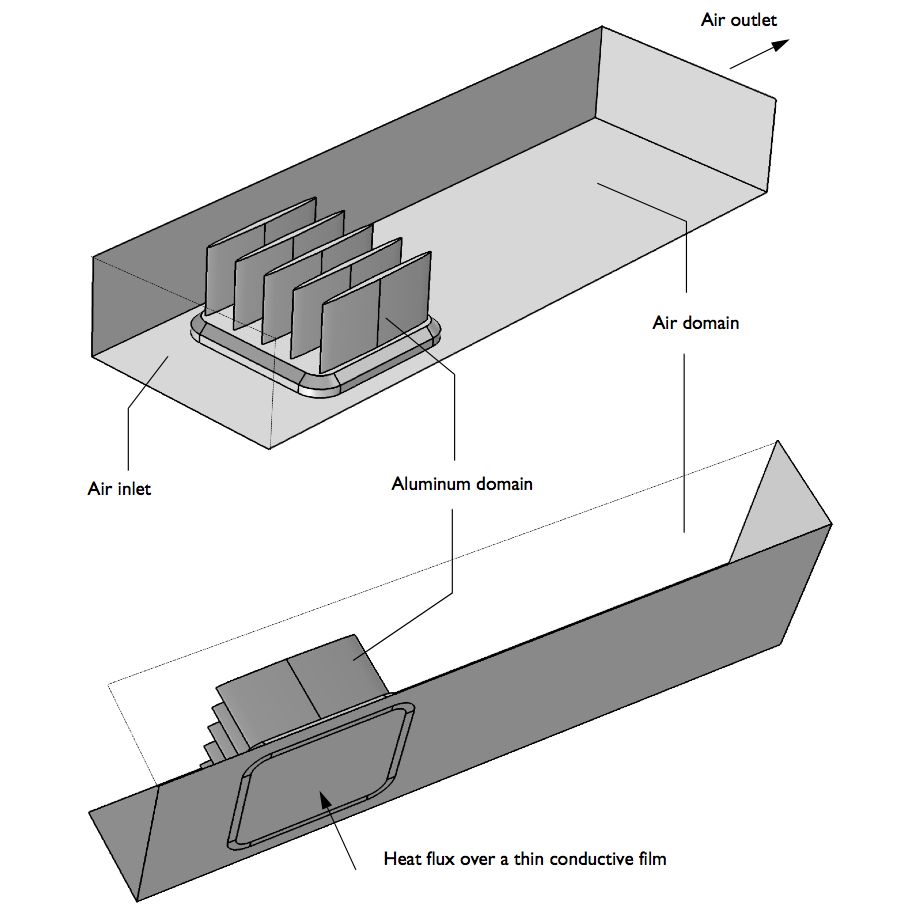The Radiator Demo App uses a simulation model of the Analytical Benchmark Test, which has a user interface (UI) that operates much simpler than a traditional simulation environment. With a simplified user interface, App users can observe how design elements affect the functionality of the heat sink. For example, when more fins are added to the design, they will see an increase in heat dissipation; however, if too many fins are added, it will hinder the flow in the channel, not only without significantly improving the cooling capacity, but also It will cause a large pressure loss - in other words, the design of this radiator is not qualified. App users can get information with tiny parameter changes to find the optimal number of fins that meet design criteria.
About the bottom model of heat sink design
You may saw this heatsink model in other tutorials as well. It is made of aluminum and is modeled in an air passage with inlet and exhaust ports on each end. Its parametric geometry is shown in the figure.

Effect of the number of fins on dissipated power and pressure loss
Increasing the number of fins increases the cooling capacity of the radiator. Although the radiator's efficient cooling performance is well-known by designers, the increase in the number of fins will result in more pressure loss.


 +86-18902844286
+86-18902844286
 E-mail
E-mail
